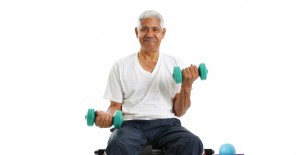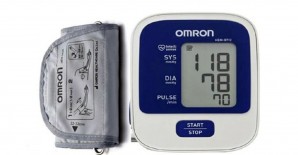
Health

Christopher Pedra, Consultant – Sports Medicine, Kokilaben Dhirubhai Ambani Hospital, Mumbai, has some answers
What conditions would preclude a senior citizen from running?
Running is a high impact activity. Therefore, any degenerative bone/joint disorder including osteoarthritis, osteoporosis, etc, would not react well to running. Besides musculoskeletal disorders, medical concerns such as cardiac, pulmonary, circulatory and neurological conditions may be contraindications for running.
Should a senior person consult a doctor before running?
Before embarking on a running regimen, senior citizens should first check with their general practitioner (GP) and get an ‘all clear’ from them. During such a visit, conditions such as diabetes, high blood pressure, coronary artery disease, asthma, emphysema and cancer can be discussed. People with pacemakers, stents and other devices/joint replacements can participate in certain exercises, but they should discuss precautions with their GP.
What are the medical tests that need to be done?
Before deciding to go to a GP, seniors can undertake a self-assessment exercise, called Physical Activity Readiness Questionnaire (PAR-Q), which is available online. Generally, if a person is healthy, they wouldn’t need any mandatory testing before starting to run. However, if there is any abnormal indication from the general health history, any of the following (or more) tests may be performed:
- Stress test
- ECG (measure the electrical activity of heart)
- 2D Echo (2-Dimensional Echocardiography)
- Lipid profile (lipoprotein analysis)
- D 3 (to measure Vitamin D deficiency)
- B 12 (to check Vitamin B-12 level)
If an individual is healthy but would like guidance on how best to train, they may want to undergo the following assessments:
- Functional movement screening (test to identify muscle asymmetries, tightness, weakness and other risk factors for injury)
- VO 2 max (to check maximum rate of oxygen consumption measured during incremental exercise)
What are the general dos and don’ts for senior runners?
Dos
- Ensure it is safe to start running
- Warm up dynamically before starting each run
- Run with a group or a friend
- Run at a low to moderate intensity (<60 per cent heart rate reserve [HRR])
HRR = HRmax – HRrest
(HRmax = Maximum heart rate;
HRrest = Resting heart rate) - Ensure adequate hydration and nutrition after a run
- Stretch and cross-train (yoga, gym, swimming, etc) 2-3 times per week
- Stop if you feel pain of any kind
- Get a professional to assess any complaints as soon as they arise
Don’ts
- Increase running distance volume more than 10 per cent per week
- Stretch statically immediately before running
- Try to run through pain
- Run alone
- Drink too much before running
- Run every day of the week; your body needs recovery. So run on alternate days
- Ignore any odd sensations/feelings/pain during or after a run
What should be done if one encounters difficulties while running?
- Muscle cramps: Stop, stretch, and continue slowly. If they don’t subside, you may have to stop completely. It is important to note that cramping is most likely owing to fatigue; therefore, training adequately is the best way to prevent cramps.
- Breathlessness or chest pain: Stop immediately and seek medical advice.
- Fall: The response depends on the reason for the fall. If the fall happened as a result of dizziness or fainting, get assessed by a medical professional. If it was a simple trip and there is no pain, it may be safe to carry on.
- Dehydration: Our thirst mechanism is a strong evolutionary instinct that should guide us sufficiently regarding when to drink. It is important not to drink too much when running. Drink when you are thirsty.
- Disorientation: Stop running and seek medical attention.
What are the common injuries that might occur during running?
The common injuries are patella-femoral pain (pain in front of the knee), illiotibial band syndrome (inflammation of illiotibial band on the outside of the knee), ‘shin splints’ (pain along the inner edge of shin bone), tendinopathies (tendon injuries accompanied by inflammation), plantar fasciitis (pain in the heel or bottom of foot), and muscle and ligament injuries (soft tissue injury). Most running injuries are a result of tissue overload resulting from a combination of poor load management (too much/too often), poor strength/stability, and poor technique.
What is your advice for runners with a ligament tear?
An acute ligament tear requires rest for adequate healing. Depending on the extent of the injury, as well as the area of the body that has been injured, healing may take anything between three and eight weeks. Immediate care may require bracing or immobilisation. Once the healing process has begun, the tissue can be gently loaded through specific exercises that target supporting joints, bones, muscles, tendons and ligaments. Individuals should return to running only once the area has sufficient stability.
How does one manage Achilles tendonitis?
Achilles tendonitis is an inflammatory phenomenon resulting from acute overload of the Achilles tendon. If you feel acute pain in the Achilles region during a run, stop running, rest the foot/ankle, apply ice, and make an appointment to see a physiotherapist.
How does one manage emergencies like a sudden collapse while running?
Immediate medical care is required during such emergencies. Call an ambulance. This is an example of why it is important for people to be aware of basic life support principles, so that bystanders can provide immediate care while waiting for the ambulance.
What are the precautions that should be taken if one has undergone a major surgery and wants to get back to running?
Ensure your surgeon has given the ‘all clear’ to start running.
Is rehabilitation and physiotherapy required after a long run?
As a matter of routine, rehabilitation and physiotherapy shouldn’t be required by healthy individuals. Post-run recovery should focus on adequate rehydration, nutrition and rest—the body regenerates with sleep, so it is very important to get adequate rest when exercising.
Featured in Harmony — Celebrate Age Magazine November 2017
you may also like to read
-
Hot tea!
If you enjoy sipping on that steaming hot cup of tea, think twice. New research establishes a link between drinking….
-
Weight and watch
If you have stayed away from lifting weights at the gym, thinking it might not be a good idea for….
-
Toothy truth
Research has established a clear association between cognitive function and tooth loss when cognitive function score was categorised into quintiles…..
-
PRODUCT OF THE MONTH
Automatic Blood Pressure Monitor Measure your blood pressure and pulse rate with no fuss Hypertension, or high blood pressure, could….







